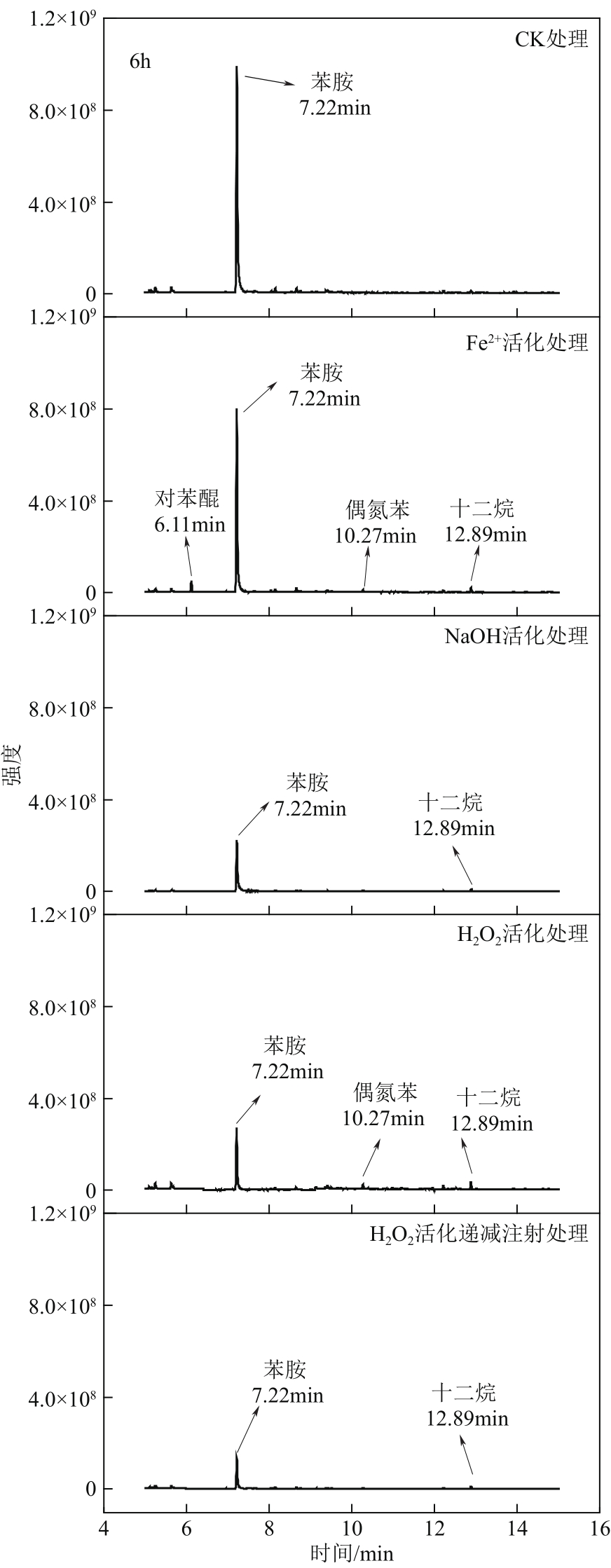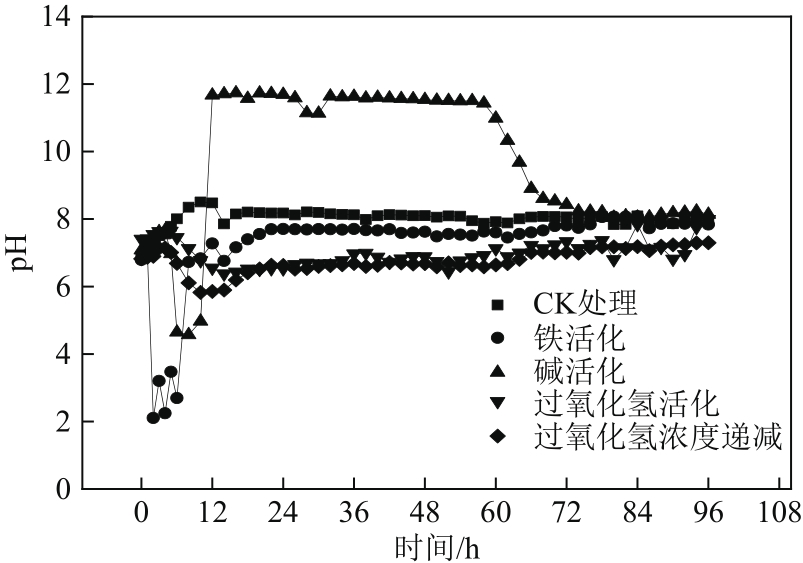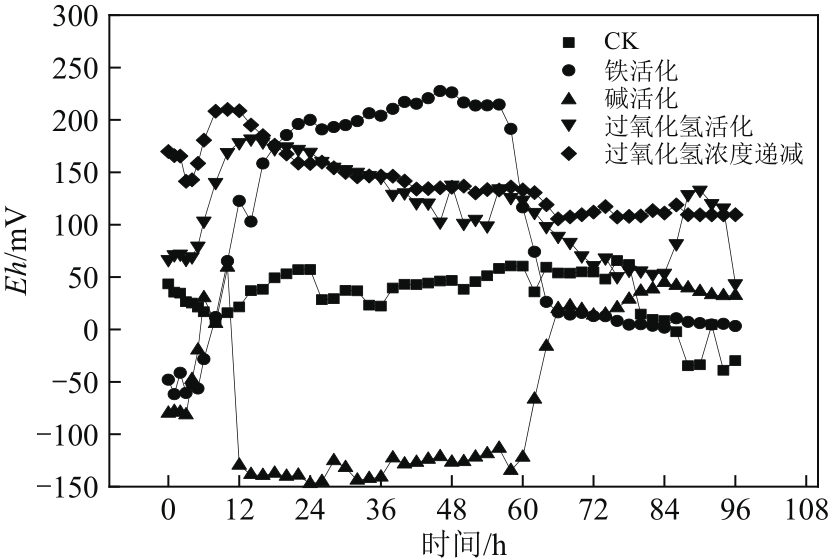| 1 |
李晓平. 国内苯胺的生产消费情况及发展建议[J]. 氯碱工业, 2006, 42(2): 29-31.
|
|
LI Xiaoping. The situation of domestic aniline production, consumption and proposals for its development[J]. Chlor-Alkali Industry, 2006, 42(2): 29-31.
|
| 2 |
崔小明. 我国苯胺的供需现状及发展建议[J]. 中国石油和化工经济分析, 2013(2): 51-54.
|
|
CUI Xiaoming. The development of aniline in China[J]. Economic Analysis of China Petroleum and Chemical Industry, 2013(2): 51-54.
|
| 3 |
孙红丽. 苯胺在土壤与地下水中的环境行为研究[D]. 武汉: 中国地质大学, 2010.
|
|
SUN Hongli. The researcher of aniline’s environmental behavrios in soil and groundwater mediums[D]. Wuhan: China University of Geosciences, 2010.
|
| 4 |
MOHANTA Vijay Laxmi, MISHRA Brijesh Kumar. Integration of cancer and non-cancer human health risk assessment for aniline enriched groundwater: a fuzzy inference system-based approach[J]. Environmental Geochemistry and Health, 2020, 42(11): 3623-3639.
|
| 5 |
井柳新, 程丽. 地下水污染原位修复技术研究进展[J]. 水处理技术, 2010, 36(7): 6-9.
|
|
JING Liuxin, CHENG Li. Progress and status of in situ remediation technology of groundwater[J]. Technology of Water Treatment, 2010, 36(7): 6-9.
|
| 6 |
黄智辉, 纪志永, 陈希, 等. 过硫酸盐高级氧化降解水体中有机污染物研究进展[J]. 化工进展, 2019, 38(5): 2461-2470.
|
|
HUANG Zhihui, JI Zhiyong, CHEN Xi, et al. Degradation of organic pollutants in water by persulfate advanced oxidation[J]. Chemical Industry and Engineering Progress, 2019, 38(5): 2461-2470.
|
| 7 |
LIANG Chenju, WANG Zih-Sin, BRUELL Clifford J. Influence of pH on persulfate oxidation of TCE at ambient temperatures[J]. Chemosphere, 2007, 66(1): 106-113.
|
| 8 |
RUPPERT Gerald, BAUER Rupert, Günter HEISLER. UV-O3, UV-H2O2, UV-TiO2 and the photo-Fenton reaction-comparison of advanced oxidation processes for wastewater treatment[J]. Chemosphere, 1994, 28(8): 1447-1454.
|
| 9 |
李姗姗, 刘峻峰, 冯玉杰. 高级氧化法处理农药废水研究进展[J]. 工业水处理, 2015, 35(8): 6-10.
|
|
LI Shanshan, LIU Junfeng, FENG Yujie. Research development of pesticide wastewater treatment by advanced oxidation technique[J]. Industrial Water Treatment, 2015, 35(8): 6-10.
|
| 10 |
PANG Suyan, DUAN Jiebin, ZHOU Yang, et al. Oxidation kinetics of anilines by aqueous permanganate and effects of manganese products: comparison to phenols[J]. Chemosphere, 2019, 235: 104-112.
|
| 11 |
陈新才, 潘辉环, 吴勇民, 等. 芬顿-混凝法去除印染废水中的苯胺类化合物[J]. 环境科学与技术, 2015, 38(5): 144-147, 188.
|
|
CHEN Xincai, PAN Huihuan, WU Yongmin, et al. Treatment of aniline compounds in dyeing wastewater by Fenton-coagulation method[J]. Environmental Science & Technology, 2015, 38(5): 144-147, 188.
|
| 12 |
TSITONAKI Aikaterini, PETRI Benjamin, CRIMI Michelle, et al. In situ chemical oxidation of contaminated soil and groundwater using persulfate: a review[J]. Critical Reviews in Environmental Science and Technology, 2010, 40(1): 55-91.
|
| 13 |
LIANG Chenju, BRUELL Clifford J, MARLEY Michael C, et al. Thermally activated persulfate oxidation of trichloroethylene (TCE) and 1,1,1-trichloroethane (TCA) in aqueous systems and soil slurries[J]. Soil and Sediment Contamination, 2003, 12(2): 207-228.
|
| 14 |
朱杰, 罗启仕, 郭琳, 等. 碱热活化过硫酸盐氧化水中氯苯的试验[J]. 环境化学, 2013, 32(12): 2256-2262.
|
|
ZHU Jie, LUO Qishi, GUO Lin, et al. Remediation of chlorobenzene-contaminated waste water using a combination of thermal- and alkaline-activated persulfate[J]. Environmental Chemistry, 2013, 32(12): 2256-2262.
|
| 15 |
HAO Hongyuan, HE Chenxu, TIAN Baozhu, et al. Study of photocatalytic activity of Cd-doped mesoporous nanocrystalline TiO2 prepared at low temperature[J]. Research on Chemical Intermediates, 2009, 35(6/7): 705-715.
|
| 16 |
RASTOGI Aditya, AL-ABED Souhail R, DIONYSIOU Dionysios D. Effect of inorganic, synthetic and naturally occurring chelating agents on Fe(Ⅱ) mediated advanced oxidation of chlorophenols[J]. Water Research, 2009, 43(3): 684-694.
|
| 17 |
ZHANG Naidong, KONG Xiangpeng, ZHANG Manxia. Study on treatment of methyl-orange in water by derivable oxidation of peroxydisulfate[J]. Journal of Advanced Oxidation Technologies, 2007, 10(1): 193-195.
|
| 18 |
BANDALA Erick R, PELÁEZ Miguel A, DIONYSIOU Dionysios D, et al. Degradation of 2,4-dichlorophenoxyacetic acid (2,4-D) using cobalt-peroxymonosulfate in Fenton-like process[J]. Journal of Photochemistry and Photobiology A: Chemistry, 2007, 186(2/3): 357-363.
|
| 19 |
FRIEDEL L. Improved friction pressure drop correlations for horizontal and vertical two-phase pipe flow[J]. European Two-Phase Flow Group Meeting, 1979, 18(2): 485-491.
|
| 20 |
Javier RIVAS F. Polycyclic aromatic hydrocarbons sorbed on soils: a short review of chemical oxidation based treatments[J]. Journal of Hazardous Materials, 2006, 138(2): 234-251.
|
| 21 |
TRAVINA O A, KOZLOV Y N, PURMAL A P, et al. Synergism of the action of the sulfite oxidation initiators, iron and peroxydisulfate ions[J]. Russian Journal of Physical Chemistry, 1999, 73(8): 1215-1219.
|
| 22 |
RODRIGUEZ Sergio, SANTOS Aurora, ROMERO Arturo. Oxidation of priority and emerging pollutants with persulfate activated by iron: effect of iron valence and particle size[J]. Chemical Engineering Journal, 2017, 318: 197-205.
|
| 23 |
LIANG Chenju, SU Hsin Wey. Identification of sulfate and hydroxyl radicals in thermally activated persulfate[J]. Industrial & Engineering Chemistry Research, 2009, 48(11): 5558-5562.
|
| 24 |
陈晓旸, 薛智勇, 吴丹, 等. 基于硫酸自由基的高级氧化技术及其在水处理中的应用[J]. 水处理技术, 2009, 35(5): 16-20.
|
|
CHEN Xiaoyang, XUE Zhiyong, WU Dan, et al. The advanced oxidation technology based on sulfate radical and application in water treatment[J]. Technology of Water Treatment, 2009, 35(5): 16-20.
|
| 25 |
EBERSON Lennart. Electron-transfer reactions in organic chemistry[J]. Advances in Physical Organic Chemistry, 1982, 18: 79-185.
|
| 26 |
YAN Zhiming, GU Yong, WANG Xing, et al. Degradation of aniline by ferrous ions activated persulfate: impacts, mechanisms, and by-products[J]. Chemosphere, 2021, 268: 129237.
|
| 27 |
NETA P, MADHAVAN V, ZEMEL H, et al. Rate constants and mechanism of reaction of SO4·- with aromatic compounds[J]. Chemischer Informationsdienst, 1977, 8(14):163-164.
|
| 28 |
PADMAJA S, ALFASSI Z B, NETA P, et al. Rate constants for reactions of SO4·- radicals in acetonitrile[J]. International Journal of Chemical Kinetics, 1993, 25(3): 193-198.
|
| 29 |
LI Yongtao, LI Dan, LAI Lianjue, et al. Remediation of petroleum hydrocarbon contaminated soil by using activated persulfate with ultrasound and ultrasound/Fe[J]. Chemosphere, 2020, 238: 124657.
|
| 30 |
DURÁN A, MONTEAGUDO J M, MARTÍN I S, et al. Mineralization of aniline using hydroxyl/sulfate radical-based technology in a waterfall reactor[J]. Chemosphere, 2017, 186: 177-184.
|
| 31 |
SCOTT S L, NELSON Y M. Biodegradability and toxicity of hydrocarbon leachate from land treatment units[C]//International Conference on Remediation of Chlorinated& Recalcitrant Compounds, Monterey. 2004.
|
| 32 |
杨乐巍, 张岳, 李书鹏, 等. 原位化学氧化高压注射修复优化设计与应用案例分析[J]. 环境工程, 2019, 37(8): 185-189.
|
|
YANG Yuewei, ZHANG Yue, LI Shupeng, et al. A case study on design and application of in situ chemical oxidation high pressure injection remediation[J]. Environmental Engineering, 2019, 37(8): 185-189.
|
 ), 张珊珊1, 施锦秋1, 高航1, 王明新1,2(
), 张珊珊1, 施锦秋1, 高航1, 王明新1,2( )
)
 ), ZHANG Shanshan1, SHI Jinqiu1, GAO Hang1, WANG Mingxin1,2(
), ZHANG Shanshan1, SHI Jinqiu1, GAO Hang1, WANG Mingxin1,2( )
)







 烷污染研究进展
烷污染研究进展